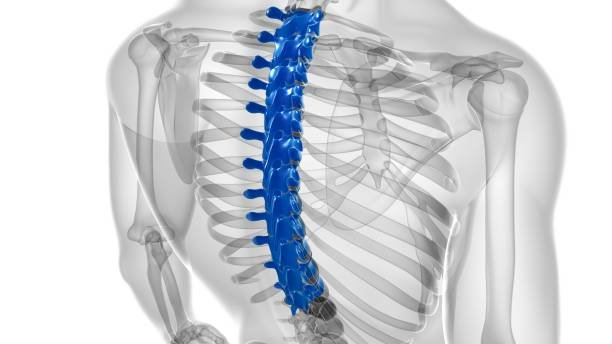Today we discuss What Toxins Are Released After Chiropractic Adjustment. We know that chiropractic adjustments can both relieve pain and keep patients well. But if you are one of those who are curious, what toxins do you release after chiropractor adjustment? The Science Behind Adjustments: What Happens to Your Body? In this article, we look at the toxins and their bodily effects related to chiropractic adjustments, along with the overall benefits of this alternative therapy.
What Happens in a Chiropractic Adjustment

The chiropractor’s adjustment uses pressure to manipulate the spine and also other joints to bring back correct alignment and function. Chiropractors use different methods to exert controlled force on targeted areas of the body. This process is designed to alleviate nerve pressure and inflammation while improving mobility. Patients often feel better right after an adjustment, but the process can also cause the release of different substances in the body as well, including some toxins that may have been stored up in muscles or other tissues.
Understanding Toxin Release
A chiropractor then offers an adjustment to ensure that everything becomes aligned again. And all these toxins can be those metabolic waste products from tissue injury, lactic acid, bilyurbins, etc, released during physical stress or injuries. As the body is often manipulated into correct alignment, these toxins can be released into the bloodstream, where they can then be processed out by the body’s detoxification systems. This release can create many different sensations and reactions.
Common Toxins Released
A common toxin released after chiropractic adjustment is lactic acid. Anaerobic metabolism, which can occur in and lead to a buildup of lactic acid in muscles during stress or exercise. As a chiropractor can also adjust the spine or joints and help the individual have better circulation, lactic acid will be flushed out of the body with the help of improved circulation; thereby reducing muscle soreness and the discomfort associated with it. This releases our bodies to a feeling of lightness also with enhanced energy as our bodies remove the metabolic waste and stimulate healing.
Read also: What to Avoid When Taking Low Dose Naltrexone
Emotional and Psychological Toxins

The adjustments can also help you on an emotional and psychological level. Physically stirring the spine flows out emotions or tightness built up in the body over history. This phenomenon is occasionally described as “emotional detox.” It can be an adjustment for patients too, who can feel relieved, sad or even joyful after an adjustment. From guilt to frustration to jealousy and anger, the emotional toxins we infuse into our bodies can be equally as damaging as physical toxins, allowing chiropractic care to entwine both the mind and body together.
The Role of Endorphins
Studies have shown that chiropractic adjustments can help stimulate the release of endorphins, dhe natural pain-relieving chemicals produced by the body. They help alleviate pain perception and promote well-being. When released, these chemicals can help mitigate any negative effects from toxins released during the adjustment period. Thus, patients can be left feeling more relaxed and euphoric after a session, which plays an even further role in the healing process.
Hydration and Detoxification
The best way to detox after a chiropractic adjustment is to hydrate adequately. This water will flush toxins faster released from the body. Hydration helps kidney performance and bolsters waste product expulsion. After an adjustment, patients are typically advised to drink copiously to facilitate healing and enhance the health of the body. A simple practice that can increase the benefits of chiropractic care and promote wellness overall.
Potential Side Effects
Though chiropractic adjustments can cause the release of toxins, there are some patients who may experience side effects. These might include mild soreness, fatigue, or even headaches. These responses are usually short-term effects due to the body adjusting to realignment. Recognizing that these reactions can typically happen as part of the process of healing can help people to set their expectations correctly, and to see the good they can gain from chiropractic care.
Read also: Down Syndrome in Cats: Myth or Reality?
Importance of Aftercare

Chiropractic adjustments provide numerous benefits to the body, and ideal aftercare is crucial in order to gain these benefits. This can entail gentle stretches, heat or ice on sore spots and proper posture. Even participating in some low-impact exercise will help carry the detox process through. In taking care of that body after the adjustment, one can ensure that the treatment can come to fruition and, more importantly, to support the health journey as a whole.
When to Get Professional Help
The vast majority of side effects following a chiropractic adjustment are mild and temporary. However, if that discomfort continues or intensifies, see your chiropractor or healthcare provider. They can evaluate your condition and decide whether you need treatment. It is important to discuss openly with your health care provider so that they address any concerns you may have and that they provide appropriate care.
Conclusion
If you read about what toxins would help the body eliminate after chiropractic adjustment, then at least you have a good overview of why this type of therapy provides benefits to you. This is also because of the release of lactic acid and emotional tension simultaneous with the stimulation of endorphin production.
Maintaining hydration and practicing proper aftercare helps improve detoxification and the benefits of chiropractic care. Bear in mind that everyone’s experience is different, so be sure to listen to your body and talk with your healthcare provider for the best results.


